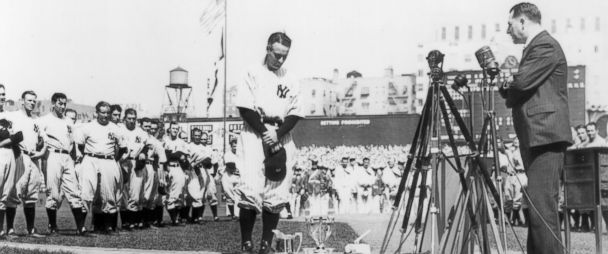80 Years Ago: The Iron Horse Says Goodbye

Imagine if one of the most iconic athletes of the current era suddenly retired, announced he had an incurable disease and within two years was dead. That is exactly what happened in 1939 when iconic New York Yankees star Lou Gehrig pulled himself out of the lineup after 2,130 consecutive games and then 80 years ago, on July 4, 1939, said goodbye to New York fans with his famous “luckiest man on the face of the earth” speech.
For 13 years, Gehrig was baseball’s most durable player as he famously was in the lineup every day. But durability wasn’t his only strength, he was also the best first baseman of his generation and was a run-producing machine.
Only Gehrig could push the Sultan of Swat, Babe Ruth, into the number three spot in the batting order. He drove in 140 or more runs nine times during his career, including 185 RBI during the 1931 season. In 1934 he claimed the triple crown as he hit .363 with 49 home runs and 166 RBI.
Interestingly, likely because the Yankees did not reach the World Series that season, he finished only fifth in the MVP voting as Mickey Cochrane earned the award.
Gehrig was a two-time MVP winning the award in 1927 and 1936. He also was part of seven World Series teams and hit .361 with 10 home runs and 35 RBI as the Yankees won six of those series.
In 1938, at the age of 35, Gehrig was still one of the top sluggers in baseball hitting .295 with 29 home runs and 114 RBI. So, the next year it was quite shocking that he had only four hits in his first 28 at bats and pulled himself out of the lineup on May 2, 1939.
Then just two months later, Gehrig was formally recognized at Yankee Stadium on July 4th with a special ceremony that included many of his former teammates, including Babe Ruth. His speech proved to be his farewell to his many fans as Gehrig was suffering from the disease (Amyotrophic lateral sclerosis – ALS) that would soon be commonly referred to as Lou Gehrig Disease.
Gehrig passed away nearly two years later on June 2, 1941. In 1942 Gary Cooper played Gehrig in the movie The Pride of the Yankees, which was nominated for 11 Academy Awards.